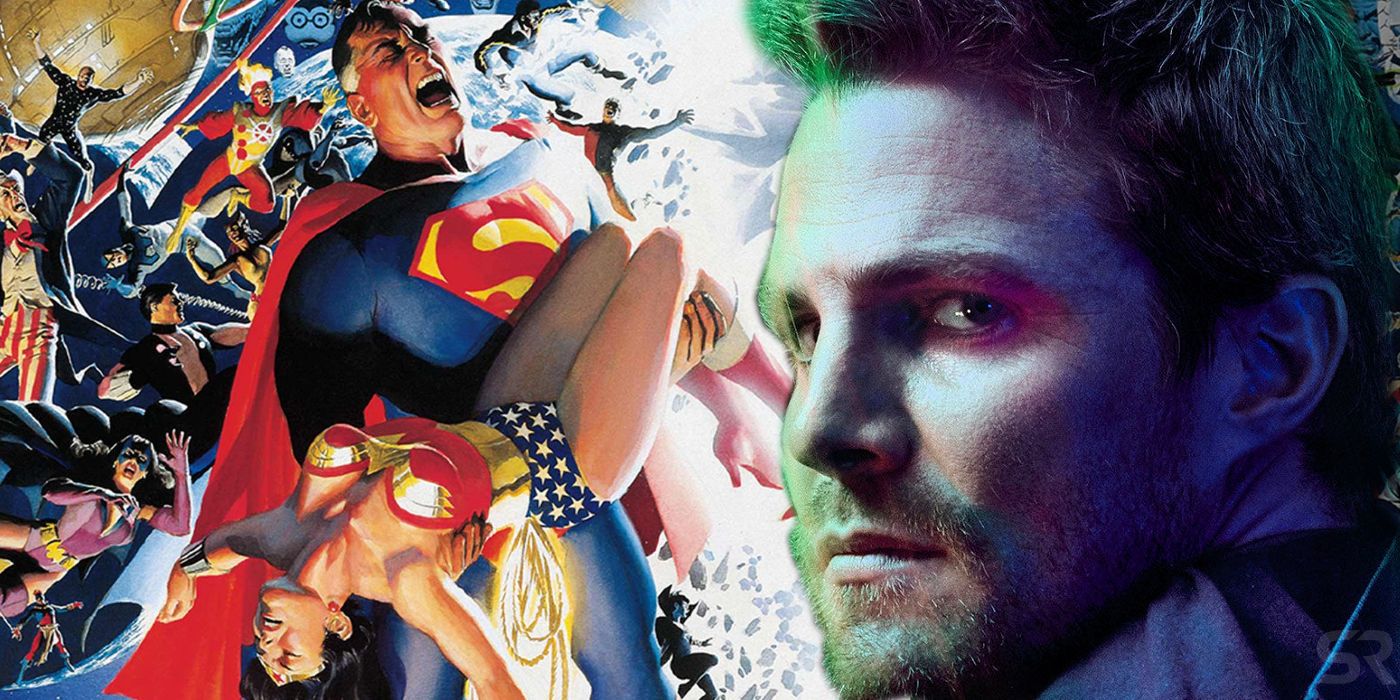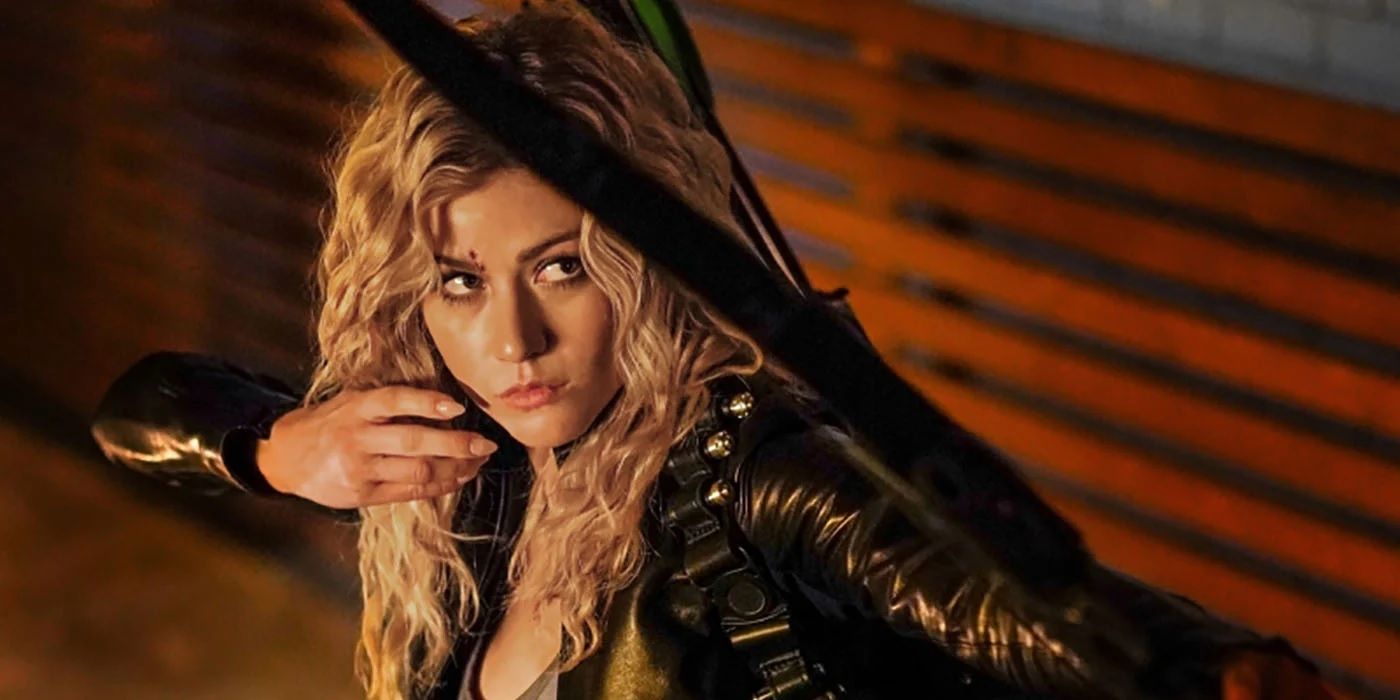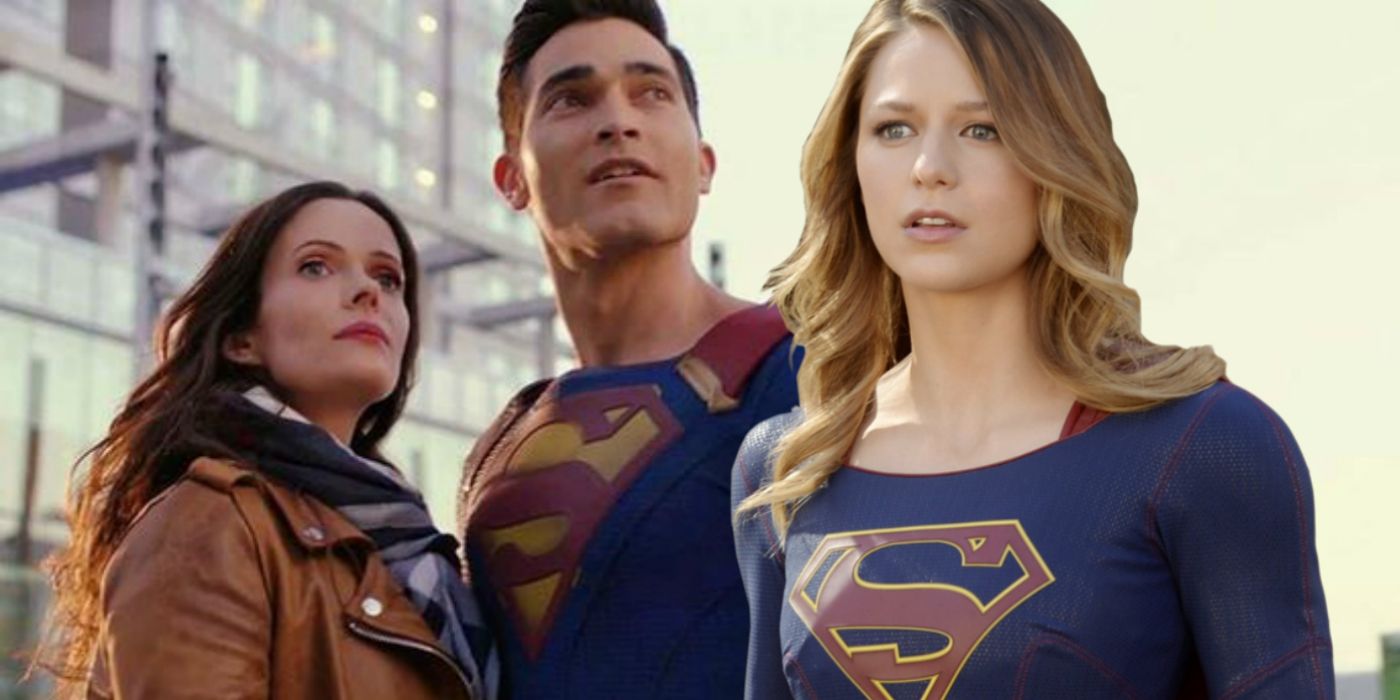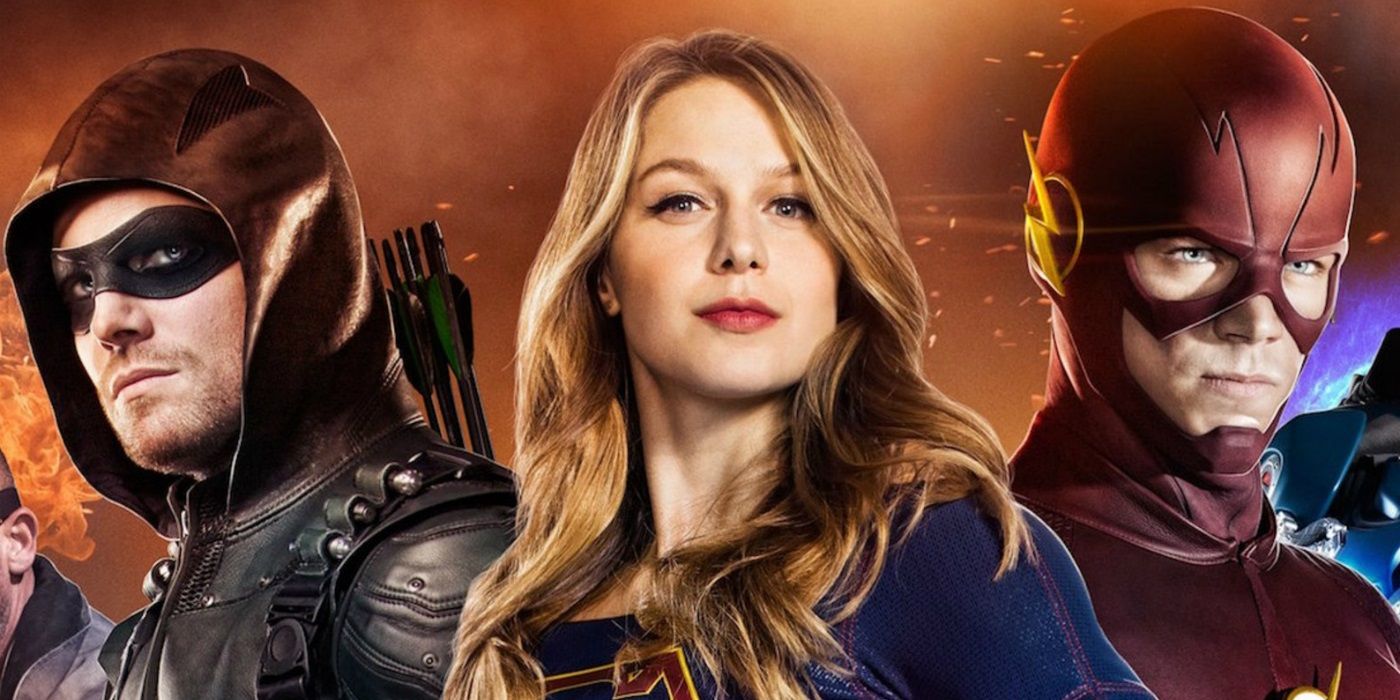After Crisis on Infinite Earths ends, the Arrowverse will never be the same - and the franchise will look considerably different than it did before. Based on Marv Wolfman and George Pérez's 12-issue comic from 1985, Crisis on Infinite Earths is expected to start the next generation of the Arrowverse after the crossover, since it will present the Earth's heroes with a threat that can wipe out the entire Multiverse itself.
Since they announced Crisis on Infinite Earths to be the 2019 crossover, the creative team behind the franchise has taken extended time to develop the 5-hour saga. With the story putting the entire Multiverse in danger, DC TV shows from the past and present are uniting for the highly anticipated event. Characters from Smallville , Birds of Prey, and more are uniting on-screen for the first time ever. It's a generational event, but the implications of combining all these universes are more profound than people may realize.
Previous Arrowverse crossovers have helped bridge stories, characters, and universes together, but never to the same extent that Crisis on Infinite Earths plans to do. So in the end, Crisis on Infinite Earths will reshape the Arrowverse as it is today and will look entirely different, not only because some shows are ending but also because of how the story is set up.
The Arrowverse Line-Up Is Changing
Crisis on Infinite Earths will mark the end of one chapter and the beginning of a new one for the Arrowverse. The crossover will be bittersweet in more ways than one as it coincides with the final season of Arrow. One of the biggest effects that Crisis on Infinite Earths will come with is how it affects the Arrowverse's line-up of shows. With the conclusion of Arrow, The CW is already in the process of developing two new Arrowverse series for next season. Keeping the Arrow in the Arrowverse alive, a female team-up show is in the works featuring Mia Smoak (Katherine McNamara), Laurel Lance (Katie Cassidy), and Dinah Drake (Juliana Harkavy). As of now, the project is currently using Green Arrow and the Canaries as a title that will see Mia take on her father's legacy as the Green Arrow.
But that is only one of the two series that The CW is working on as the network is expanding its presence of the House of El. After appearing in several episodes of Supergirl, Hoechlin is committing to The CW full-time as a Superman and Lois spinoff is in early development. Hoechlin will reunite with his co-star Elizabeth Tulloch who will reprise her role as Lois Lane following her Arrowverse debut in the Elseworlds crossover. The project will follow Clark and Lois' lives as they deal with their lives as parents. After Lois and Clark revealed that they were expecting a child in Elseworlds, Crisis on Infinite Earths will reportedly feature their son. Whether or not the child will be Jon Kent, he will serve as a main character in Superman and Lois.
Crisis on Infinite Earths will play a role in one way or another for both of the spinoffs. If Green Arrow and the Canaries and Superman and Lois both get ordered to series, it would give The CW a total of seven DC shows next season. Presuming that the five current ones all get renewed, the network would be setting a new record for themselves. But in addition to all this, it means that Arrow won't be leading the way as the flagship Arrowverse series.
Crisis Will Likely Merge Earths Together
The core element of the iconic Crisis on Infinite Earths storyline is how it changed the role the Multiverse had in DC's continuity. Arrow and The Flash have been using their new seasons to start building up towards the crossover by showcasing the danger that the Multiverse is in. The season premiere of Arrow saw Earth-2destroyed by a wave of anti-matter, demonstrating that the Crisis has already begun. The second episode of The Flash season 6 had Barry (Grant Gustin) witness a billion timelines of the Crisis. Throughout "A Flash of the Lightning", Barry sees the Multiverse be destroyed in every timeline except for one. The timeline where they managed to stop the Crisis is the one where The Flash dies. Not only is Barry destined to die in the Crisis, but so is Oliver Queen (Stephen Amell). Whether or not they actually do die remains to be seen.
What is just as important, though, is what will happen to the Earths that viewers have seen in the last few years. Currently, Supergirl and Black Lightning exist on their own respective Earths in the Multiverse. With both shows getting involved with the 5-hour event, viewers should expect those shows to be most affected by the Crisis. In order to make crossovers easier for future seasons, the Crisis will most likely merge Supergirl and Black Lightning's worlds together with Earth-1, the main universe of the Arrowverse. With Black Lightning still filming in Atlanta, Georgia, and not in Vancouver, Canada, like the other Arrowverse shows, regular crossovers might still be limited. However, having Jefferson Pierce (Cress Williams) and the rest of the Freeland characters on Earth-1 after the Crisis is still very likely.
Even if the Black Lightning characters wouldn't be seen often on the other shows, references and archive footage can still work if they're all on the same Earth. For Supergirl, it's almost a given that Earth-38 is merging with Earth-1, especially with the news of the Superman and Lois series. In regards to other series/Earths merging with Earth-1, such as the DC Universe shows Titans, Doom Patrol or Stargirl, chances of that happening are slim to none.
What This Means For The Arrowverse's Future
Crisis on Infinite Earths, as a whole, will allow for new shows to get seeded, worlds to get merged, and a new phase of the Arrowverse to begin. But the crossover will likely have bigger effects than just those factors. Having existed since 2012, Arrowverse will be able to use Crisis on Infinite Earths to extend to the longevity of the franchise. Longtime viewers may start to see in the next few years the overall continuity being altered as a result of the Crisis. The Arrowverse has been a massive success for The CW with the network having access to several big DC Comics IPs. It shouldn't shock anyone that the network will want to keep this universe around for as long as possible. This crossover can, essentially, soft reboot the DC TV universe that will benefit current and new shows in the long run. For the veterans, Crisis on Infinite Earths could certainly allow the current shows to go on for a bit longer by getting a fresh slate, in a matter of speaking.
It doesn't have to be through major retcons, but to use this crossover as a way to change how they tell their stories across a 22-episode season. But it wouldn't be unheard of if certain character dynamics or histories got changed as a result of the Crisis. For new shows that will come, the Crisis allows future creative teams to shape their series in refreshing ways as a way to add new layers to the Arrowverse. What's more, with so many DC TV shows joining the franchise - from Smallville to Birds of Prey - this means that the Arrowverse is now bigger than ever. Characters who've appeared on Smallville before could, theoretically, reappear in the Arrowverse in the future. Who knows, perhaps after they defeat the Anti-Monitor, the universe's heroes will take on Darkseid.




